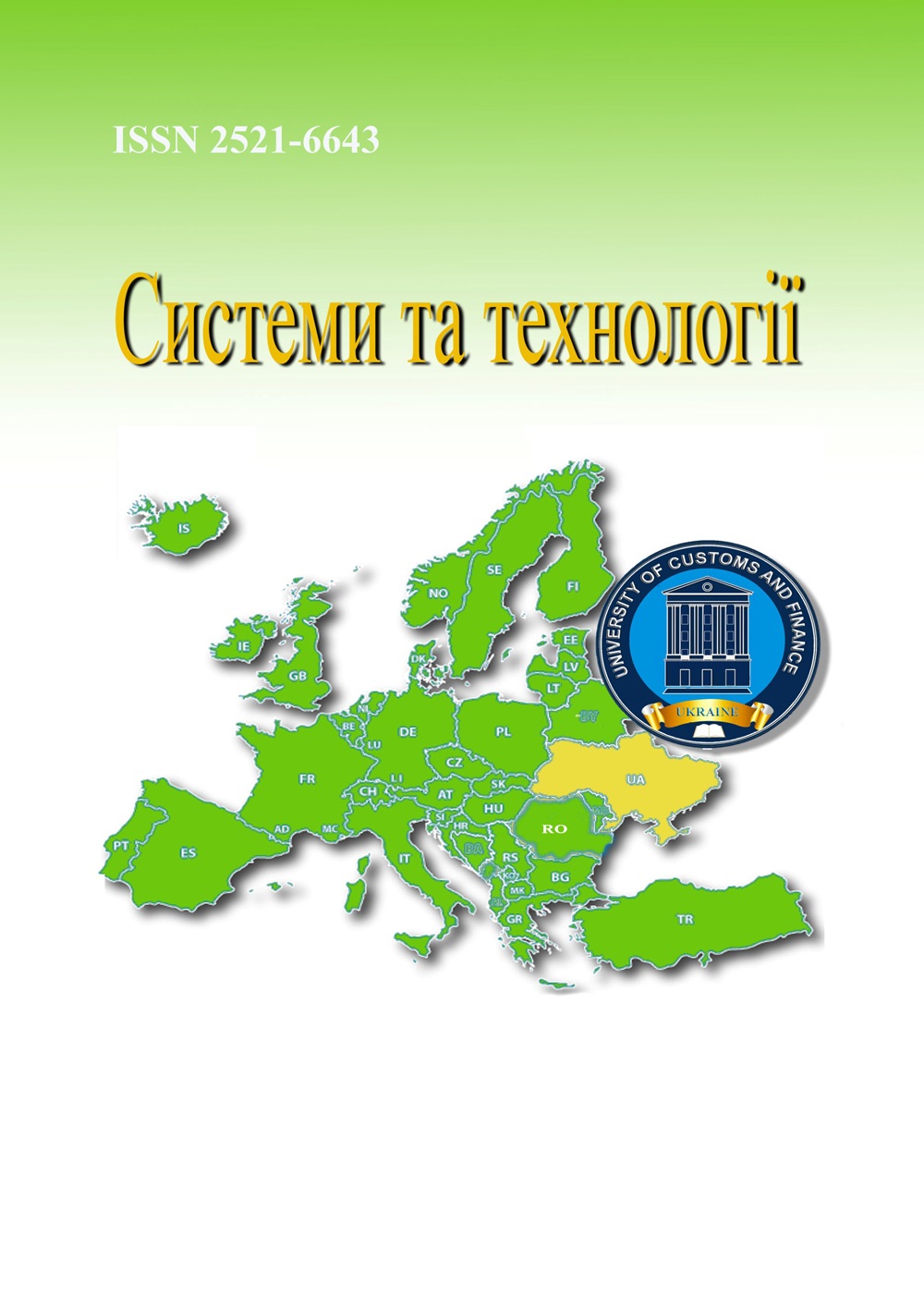TELEMETRY CHANNEL DATA ESTIMATION EXPOSED TO CHAOTIC IMPULSE-PULSE DISTURBANCES
Abstract
The paper is devoted to the problem of devices synthesis for estimating the linear stationary dynamic systems state operating under conditions of noise and perturbations in the observation channel. The paper considers the joint influence of Gaussian noise and chaotic pulse disturbance on the accuracy of message filtering in a digital telemetry channel. The problem of many telemetry systems is the disparity between high data rate and reliability of their reception under the influence of impulse noise, which is typical for various medium information transmission. Since, due to the rapid development of technology, telemetry has become crucial to ensure the proper level of reliability and guarantee a given degree of safety of complex technological facilities and systems, such discrepancy is becoming more and more critical.The aim of the study is to improve the accuracy of message estimation in a telemetry channel exposed to chaotic-pulse disturbances against the background of a moderate increase in computational cost.In general, the efficiency of using methods for synthesizing optimal estimation devices depends on the completeness of a priori information about the processes mathematical model occurring in the control object, statistical information about the existing disturbances properties and the initial data formation mechanism. For problems of this class, the standard solution is the optimal Kalman filter demonstrating the highest quality of convergence of estimates to true values. If data on the current state of the observation system is missing, unreliable, or does not correspond to the accepted models, then the synthesis problem becomes incorrectly formulated. To resolve this contradiction, the presented work proposes a correction of the telemetry observation channel mathematical model, taking into account the appearance of differently accurate initial data, including anomalous ones.Based on the adjusted model, a pseudo-Bayesian algorithm for multi-hypothesis estimation is synthesized. It includes a mechanism for calculating the posterior probability of chaotic impulse noise and proportional weighting of the initial estimates based on it. Based on the results of digital statistical modeling, a comparative analysis of the accuracy of the considered evaluation algorithms was carried out. The residual of the signal generated as a difference between the telemetry reference signal and the estimate of the affected chaotic pulse interference obtained with the help of appropriate filters was chosen as a source of information for the relative accuracy estimation. The source of information for assessing the relative accuracy was the signal residual.It was generated as the difference between the reference telemetry signal and the estimate of the affected chaotic impulse disturbances obtained using the appropriate filters. Numerical simulation results confirm the effectiveness of the proposed approach.
References
2. Konyha J. Off-grid telemetry system for hydrate inhibition on gas wells. Proceedings of the 2015 16th International Carpathian Control Conference (ICCC), Hungary: Szilvasvarad. 2015. P. 220–223.
3. Rice M., A. Davis A., Bettweiser C. Wideband channel model for aeronautical telemetry. IEEE Transactions on Aerospace and Electronic Systems. 2004. Vol. 40(1). P. 57–69. doi: 10.1109/TAES.2004.1292142.
4. Ban H., Peng T., Lin D. A Novel Channel Estimation Method for UAV in High-Capacity CDMA Network. IEEE 6th International Conference on Computer and Communications. 2020. P. 1-7. doi:10.1109/ICCC51575.2020.9345055.
5. Elbashir A., Sayar A. A Redundant Telemetry Link System for Uncrewed Aerial Vehicles. Engineering, Environmental Science. Published in Scalable Computing. 2024. Vol. 25(6). P. 5714–5721. doi:10.12694/scpe.v25i6.2602.
6. Carden F., Henry R., Jedlicka R. Telemetry Systems Engineering. Boston: Artech House. 2002. 628 p.
7. Webster J.G. Measurement, Instrumentation, and Sensors Handbook. CRC Press. 1999. 2487 p.
8. Giri D. V., Tesche F. M. Classification of intentional electromagnetic environments (IEME). IEEE Transactions on Electromagnetic Compatibility. 2004. Vol. 46(3). P. 322–328. doi: 10.1109/TEMC.2004.831819.
9. Tcheumeleu R.T., Pouhed D. Analysis of methods for classification of intentional electromagnetic environments. International Conference on Electromagnetics in Advanced Applications (ICEAA).2015. P. 1385–1388.
10. Sabath F. System oriented view on High-Power Electromagnetic (HPEM) Effects and Intentional Electromagnetic Interference (IEMI). Conference: General Assembly of the URSI. 2008. Vol. 29. P. 381–385.
11. Sabath F. Classification of Electromagnetic Effects at System Level. Ultra-Wideband, Short Pulse Electromagnetics 9. Springer: 2010. P. 325–333.
12. Yang D., Y. H., Kollman R. Analysis of High-Power RF Interference on Digital Circuits. Electromagneti cs. 2006. Vol. 26(1). P. 87–102.
13. Lawrence R., Kaufman H. The Kalman Filter for the Equalization of a Digital Communications Channel. IEEE Transactions on Communication Technolog. 1971. Vol. 19(6). P. 1137–1141. doi:10.1109/TCOM.1971.1090786.
14. Rice M., Satorius E. Equalization Techniques for Multipath Mitigation in Aeronautical Telemetry. Proc. of IEEE Military Communications Conference. 2004. P. 65-70. doi: 10.1109/MILCOM.2004.1493248.
15. Williams I., Saquib M. Analysis of Performance Limitations with Linear Adaptive Equalizers for Aeronautical Telemetry Applications. Proc. of The European Telemetery Conferenc. 2010. P. 120-126.
16. Dalle Mese E., Corsini G. Adaptive Kalman filter equalizer. Publication: Electronics Letters. 1980. 16(14). https://doi.org/10.1049/el:19800381
17. Shmaliy Y. S., Zhao S. Optimal and Robust State Estimation Finite Impulse Response (FIR) and Kalman Approaches. Hoboken, New Jersey: John Wiley & Sons, Inc. 2022. 460p
18. McGuire M., Simaю M. Low-order Kalman filters for channel estimation. IEEE Pacific Rim Conference on Communications, Computers and signal Processin. 2005. P. 352–355. doi:10.1109/PACRIM.2005.1517298.
19. Volovyk A., Kychak V. Detection Filter Method in Diagnostic Problems for Linear Dynamic Systems. Visnyk NTUU KPI Seriia – Radiotekhnika Radioаparatobuduvannia. 2021. Vol. 84. P. 30–39. doi:10.20535/RADAP.2021.84.30-39.
20. Volovyk A. Yu., Kychak V. M., Havrilov D.V. Discrete Kalman Filter Invariant to Perturbations. Acta Polytechnica Hungarica. 2021. Vol. 18(10). P. 21–41. doi:10.12700/APH.18.10.2021.10.2.
21. Wang X, Zhu F. Robust recursive estimation for the errors-in-variables nonlinear systems with impulsive noise. Sci Rep. 2025. Vol. 15(1). 6031. https://doi.org/10.1038/s41598-025-89969-z.
22. Кичак В. М. Методи та пристрої обробки радіосигналів бортових авіаційних систем посадки / В. М. Кичак, Ю. М. Воловик, А. Ю. Воловик.– Вінниця: ВНТУ, 2011. – 208. с.

 ISSN
ISSN 




